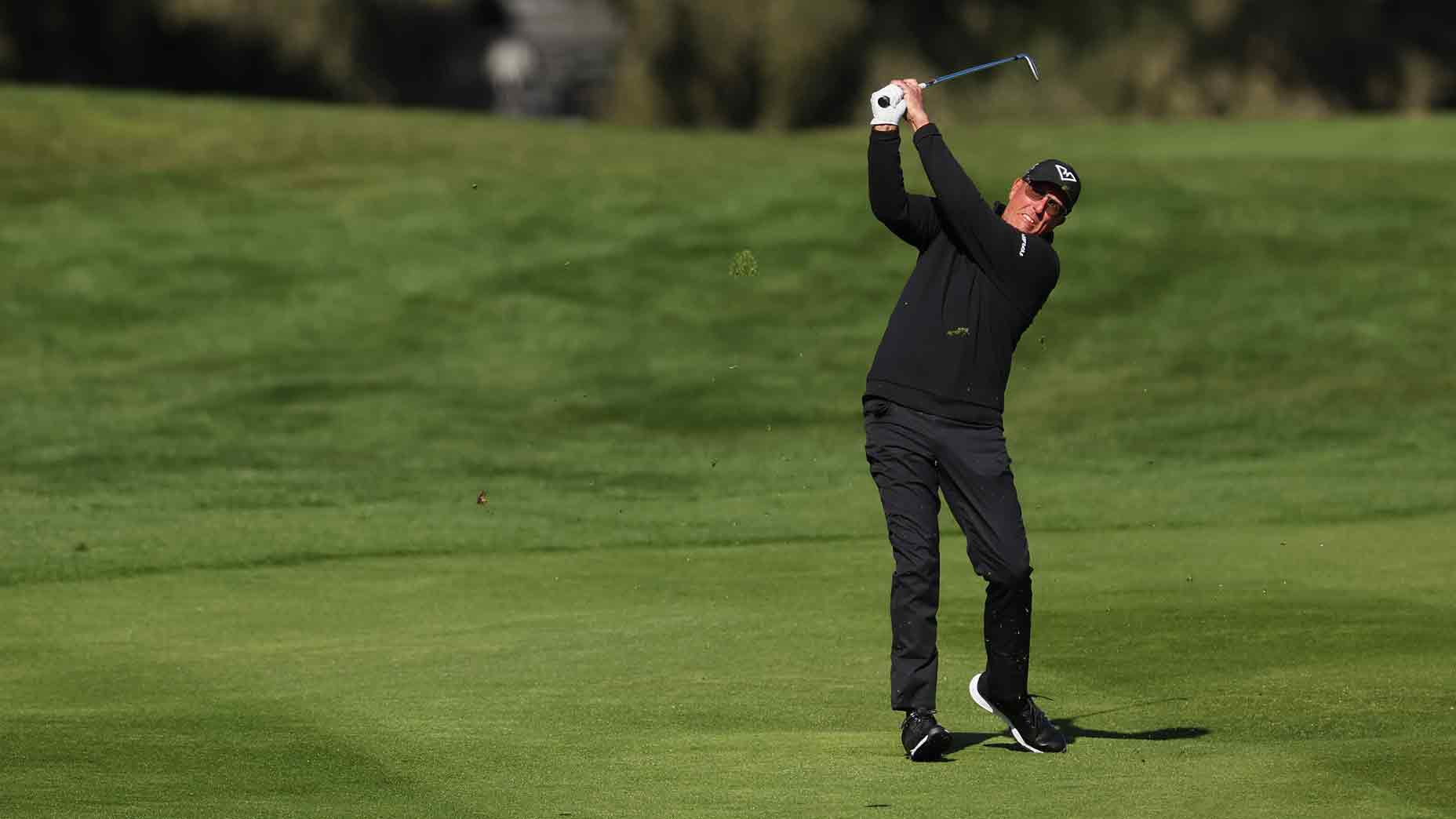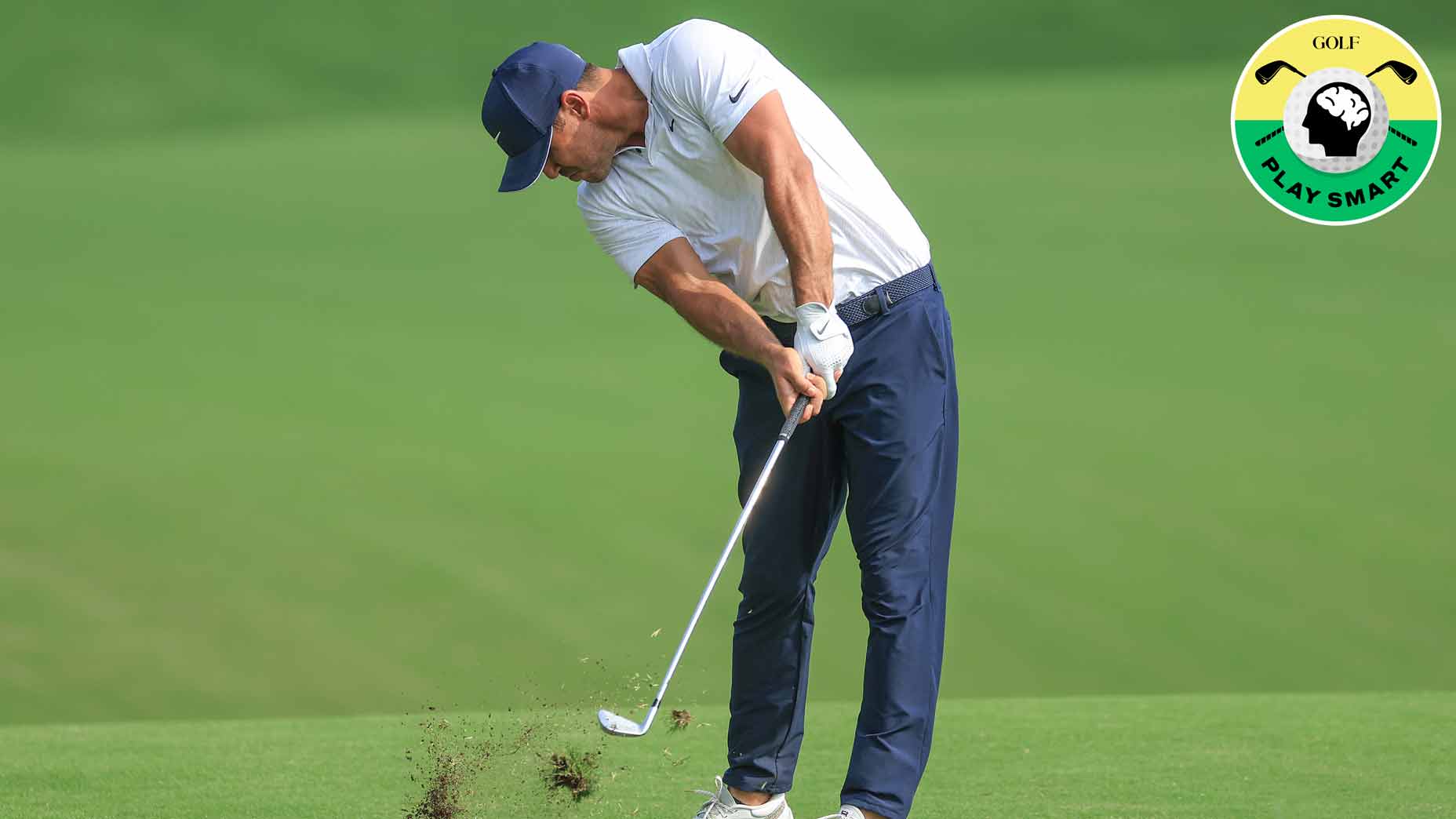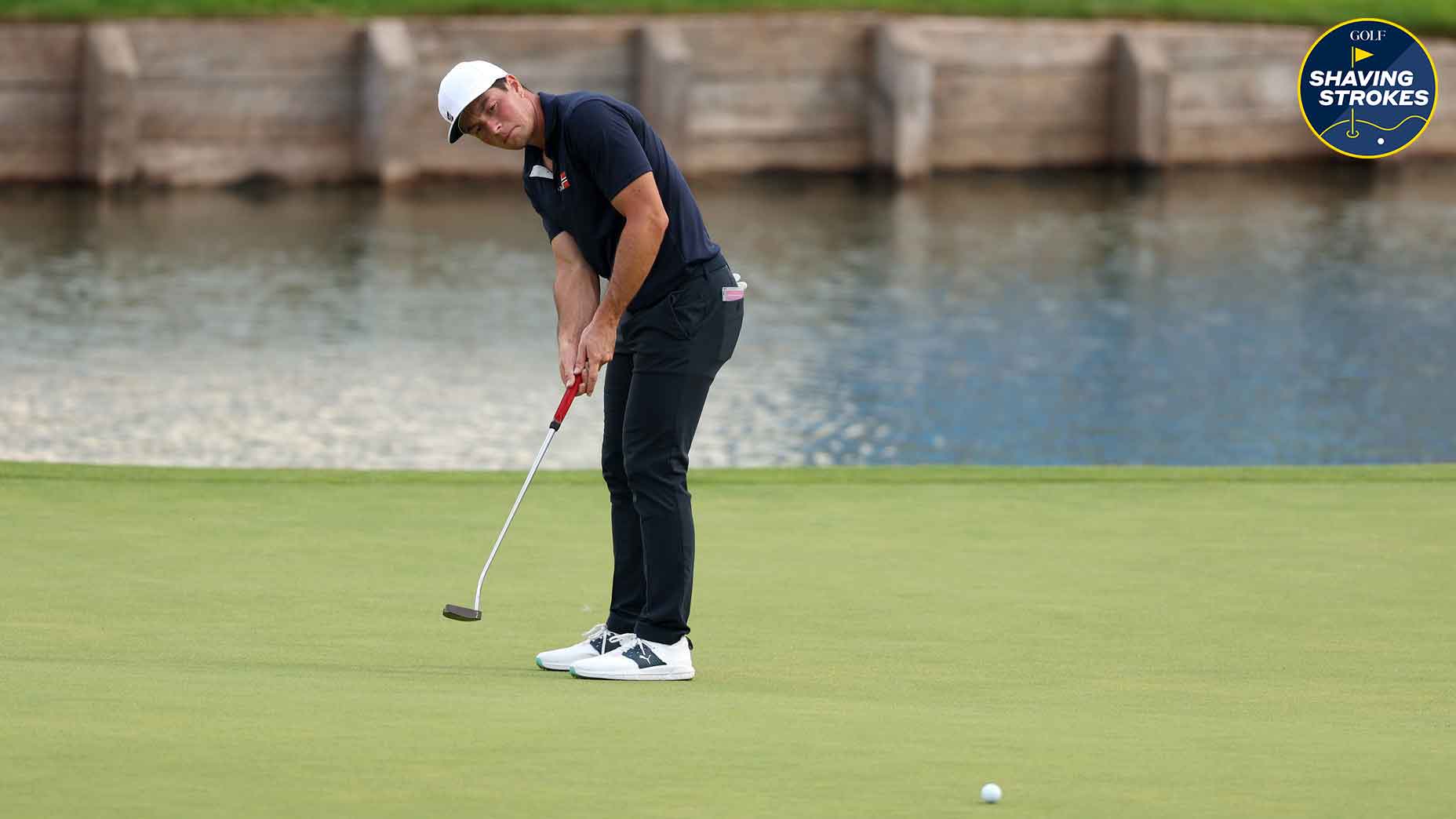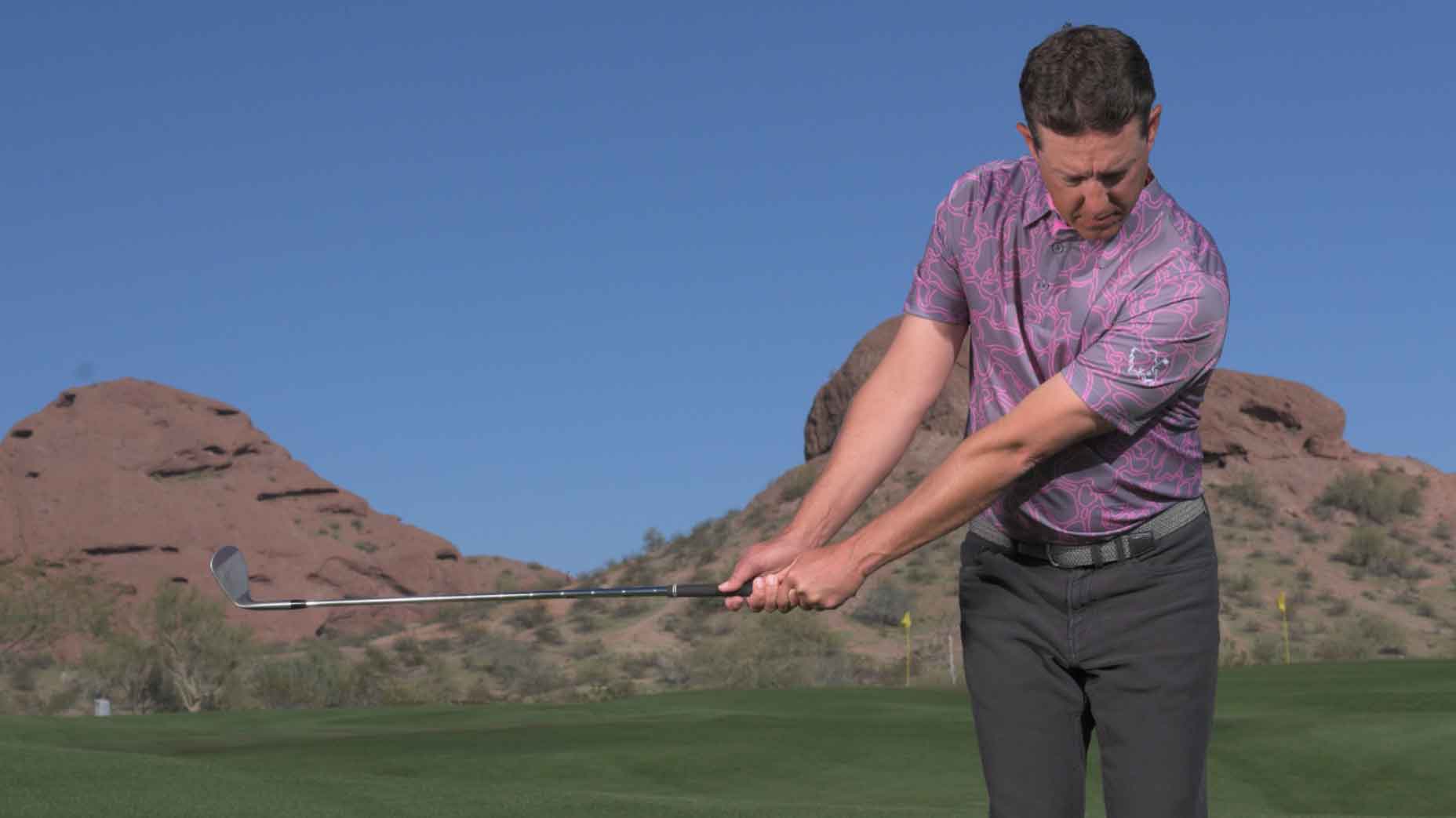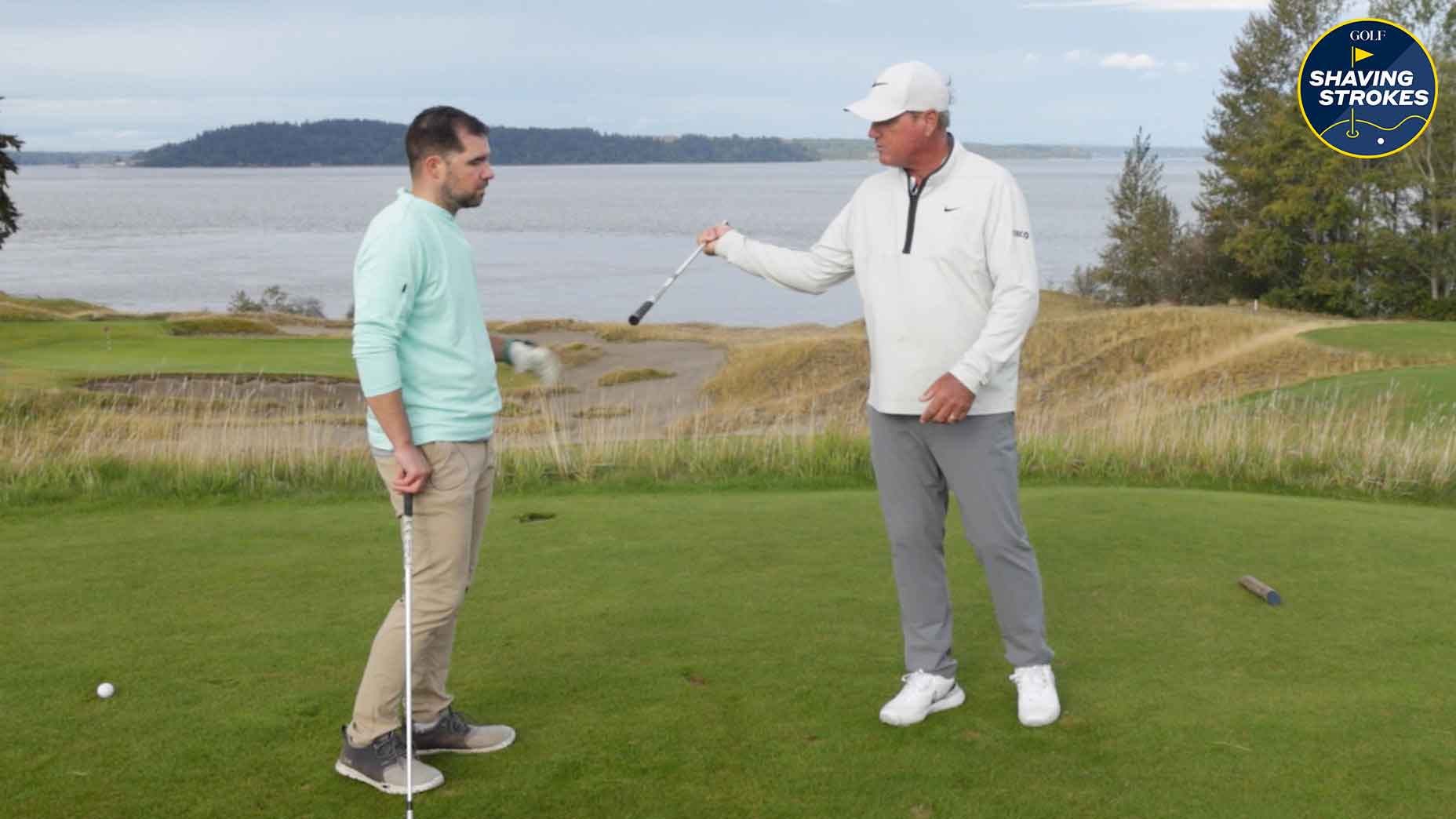This simple divot drill will help you compress the golf ball. Here’s how
- Share on Facebook
- Share on Twitter
- Share by Email
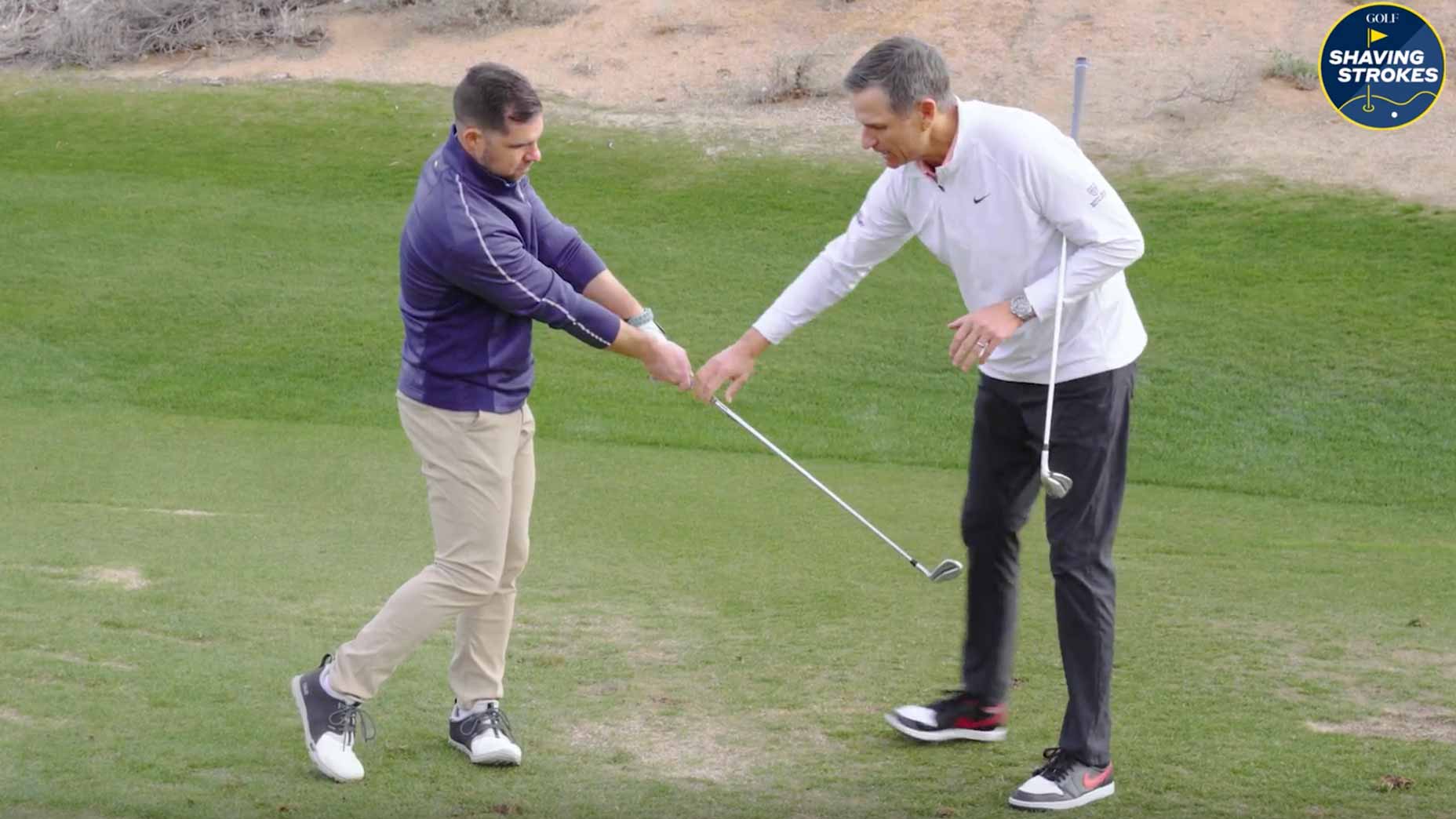
By learning to compress the golf ball, you'll start flushing more shots.
GOLF.com
Welcome to Shaving Strokes, a GOLF.com series in which we’re sharing improvements, learnings and takeaways from amateur golfers just like you — including some of the speed bumps and challenges they faced along the way.
Compressing the golf ball is a skill that the best players utilize in their games, as it helps them make ball-first contact and optimize their shot for the most distance and control.
But for mid-handicappers like myself (and many of you reading), it’s not something that’s easily learned.
Sure, we may be able to compress the ball every so often, but, most of the time, it’s by accident, with many amateur golfers not knowing what they did properly in order to do it.
Phil Mickelson: The 1 flaw all poor ball-strikers have in commonBy: Nick Dimengo
One of the first things required for ball compression is knowing how to take a proper divot — meaning you hit the ball first and then the ground. If you struggle with chunks, it means you’re hitting the turf first, whereas tops means you’re simply not engaging with the ground at all!
As I continue on my journey toward breaking 80 for the first time, I know I must become a better ball-striker. This means compressing the ball and making purer contact.
To work toward doing this, I recently got a lesson from GOLF Top 100 Teacher Brech Spradley, who walked me through a simple divot drill to help give me the feel of where my club should be during the golf swing. Take a look below to learn a few things of your own.
Try this drill to compress the golf ball
As the video begins, Spradley discusses an obvious weakness with my ball-striking.
“Nick struggles with good compression and getting that nice dollar-bill divot past the ball,” he says.
But this isn’t uncommon for Spradley to see when he’s on the lesson tee with amateur players.
“When I do golf schools with mid-to-high handicappers, they need a little better understanding of what’s going on with the hands and wrists through impact,” he adds. “But the key is uncocking my wrist like a hammer, which, when I do fully, allows the club to go outward — which, in the golf shot, means it’s moving towards the ground.
The key for compressing irons and making divots like the prosBy: Zephyr Melton
“A lot of golfers tend to fight a scoop, and their wrists don’t go out, but, instead, they go up. The more I do that, the club goes away from the ground.”
This is where Spradley dives into a simple divot drill to help improve my contact and, eventually, lead to compressing the golf ball.
“When we come into impact in the golf swing, we have a cocked left wrist and a cocked right wrist — with the latter being more of an extension, and the former being more flat. As we turn into the ball, there’s rotation of the left arm. It’s in this area that the lead wrist begins uncocking and moving down. This is the feeling that a lot of people tend to override, the vertical part of the unhinge.”
Instead of fighting this feeling, Spradley says I need to start digging the leading edge into the ground — which will help compress the golf ball and produce a proper divot. But it also requires pushing the upper body up.
“The body gets the club out, and the wrist is getting it down,” he adds.
What your divots can teach you about your swingBy: Nick Dimengo
Next, Spradley has me hit some shots, really working on how my wrists hinge and how I utilize the leading edge prior to ball-first contact. After hitting a few decent results, he reminds me to keep going through the process, which will eventually lead me to compressing the ball.
“As you get better at that, you’ll notice the club flying through,” he says. “You just need a little better understanding of the hammer [and how to dig that club into the ground before impact].”
By really understanding how to produce the right kind of divot and in the right place (after the ball), I can learn how to compress the golf ball and begin hitting flush shots. So give this a try for yourself to see similar results.

Rukket Sports Pathfinder Impact Mat™
$69.99
View Product
Latest In Instruction

Nick Dimengo
Golf.com Editor

